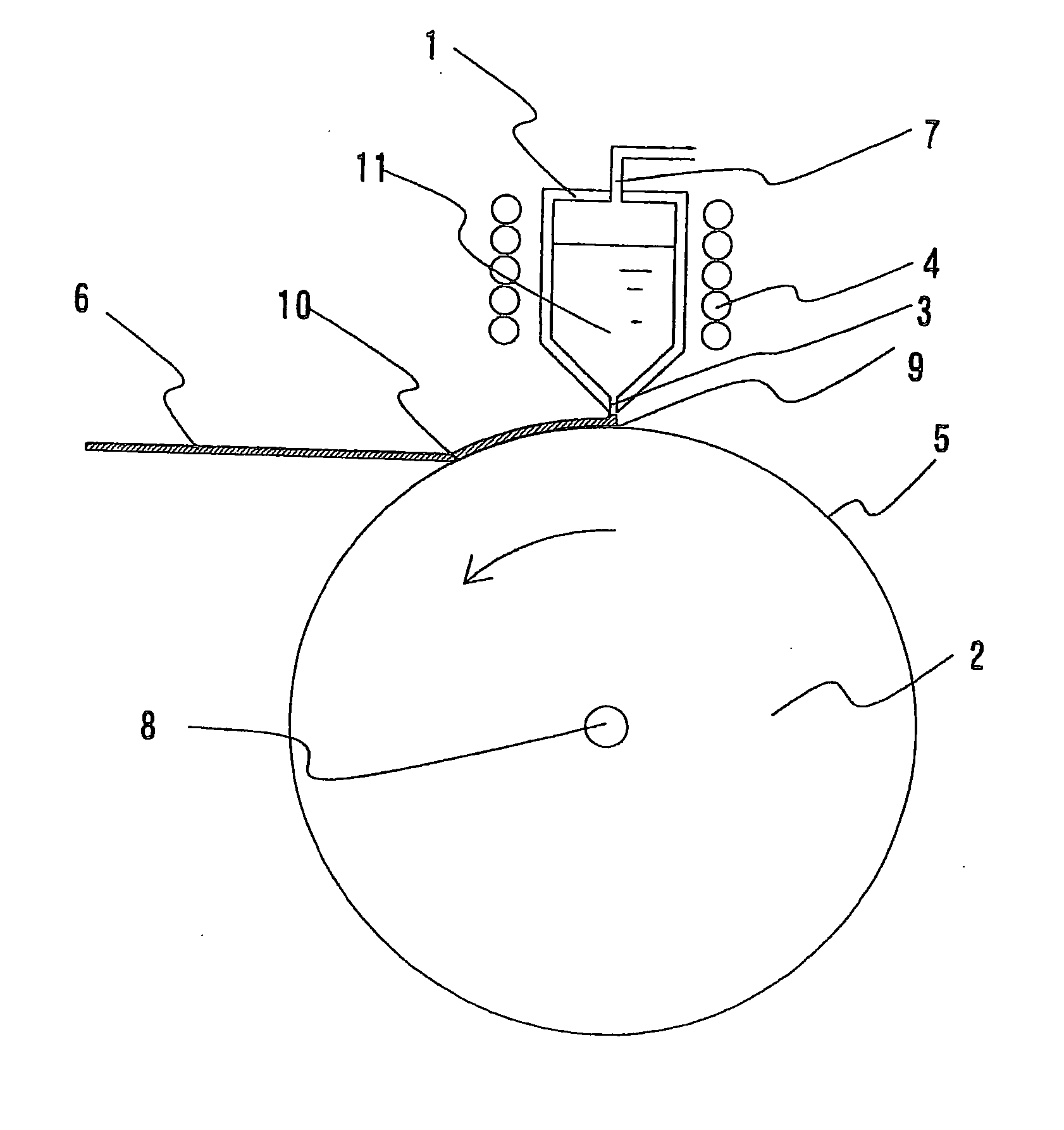Hydrogen separation membrane and process for producing the same
a technology of hydrogen separation membrane and process, applied in the field of metal foil, can solve the problems of low ductility of vanadium alloy foil and niobium alloy foil formed through rolling, increasing production cost, and low ductility of palladium, and achieve excellent resistance to hydrogen embrittlement and hydrogen permeability
- Summary
- Abstract
- Description
- Claims
- Application Information
AI Technical Summary
Benefits of technology
Problems solved by technology
Method used
Image
Examples
examples
[0038] A foil of a niobium alloy was fabricated utilizing a single roll type alloy foil production unit having the structure illustrated in FIG. 1.
[0039] Crucible 1 was made of boron nitride based ceramics, and had a slit having a width of 0.4 mm and a length of 30 mm. Roll 2 was made of copper and had the dimensions: diameter of 300 mm and length of 80 mm. The distance between surface 5 of the roll and slit 3 was 0.5 mm. The roll was cooled with water. The number of rotations of the roll was set at 1500 rpm. A niobium alloy of 50 Nb-40 Ni-10 Zr (atomic %) was placed within the crucible. The inside of the crucible was heated to 1750° C., and the niobium alloy was completely melted. After that, an argon gas was injected into the crucible so that the melt was jetted from the slit so as to form a foil layer on the surface of the roll, and this foil layer was continuously peeled from the roll, so as to gain a niobium alloy foil (Example 1) having a thickness of 0.03 mm. The pressure wi...
PUM
| Property | Measurement | Unit |
|---|---|---|
| Percent by atom | aaaaa | aaaaa |
| Percent by atom | aaaaa | aaaaa |
| Percent by atom | aaaaa | aaaaa |
Abstract
Description
Claims
Application Information
 Login to View More
Login to View More - R&D
- Intellectual Property
- Life Sciences
- Materials
- Tech Scout
- Unparalleled Data Quality
- Higher Quality Content
- 60% Fewer Hallucinations
Browse by: Latest US Patents, China's latest patents, Technical Efficacy Thesaurus, Application Domain, Technology Topic, Popular Technical Reports.
© 2025 PatSnap. All rights reserved.Legal|Privacy policy|Modern Slavery Act Transparency Statement|Sitemap|About US| Contact US: help@patsnap.com



